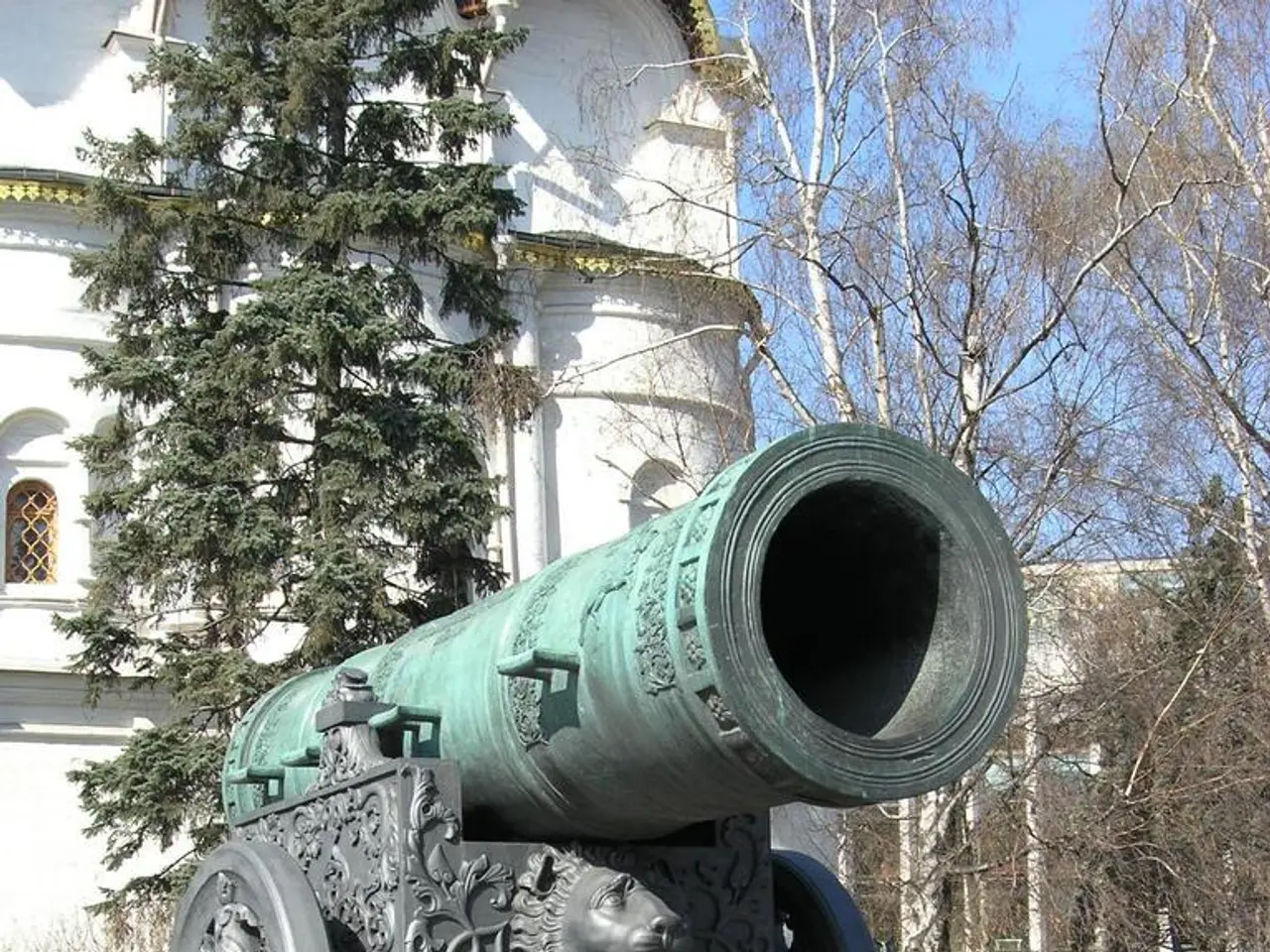Historical Milestones on July 8th
A Miraculous Discovery and a Fateful Day
On the 8th of July, two significant events took place, thousands of miles apart, in different centuries.
In the year 1579, a holy painting known as Our Lady of Kazan was discovered in a burnt-out building in the Russian city of Kazan. The discovery was made by a nine-year-old girl named Matrona, who had visions of the painting's location in a series of dreams[1]. After digging through the debris of the house, Matrona and her mother found the painting wrapped in a piece of old cloth and buried under a thick mound of ash[2]. The face of the icon appeared fresh and unspoiled, as if newly painted[3]. News of the discovery spread quickly, and the icon was solemnly transferred by Archbishop Jeremiah and clergy to the parish church of Saint Nicholas in Kazan[4][5].
This icon gained great religious significance and was later brought by Prince Pozharsky during the 1612 campaign to liberate Moscow from Polish occupation[1]. The priest in charge of the parish where the icon was placed, Errmogenes (later Metropolitan of Kazan and Patriarch of All Russia), documented the event, linking it to the Time of Troubles in Russian history[1].
In contrast, on the same day in the year 1822, Percy Bysshe Shelley, the renowned English Romantic poet, drowned off Italy[6]. His ship, the Don Juan, sank in a violent storm[7].
Meanwhile, in England, events were unfolding concerning James, Duke of Monmouth. On the 7th of July, Monmouth was pursued and hid in an area of Dorset farmland known as the Island[8]. The following day, on the 8th, Monmouth was found cowering in a ditch in Dorset[9]. He was taken to London and executed[10]. These events marked Monmouth's failed rebellion against King James II and VII on the 8th of July 1685[11].
On the same day in 1663, King Charles II granted a royal charter to Rhode Island, acknowledging Indian rights to the land, guaranteeing freedom of worship, and giving the colony a large measure of self-government[12].
In summary, the 8th of July has been marked by miraculous discoveries, such as the Our Lady of Kazan icon, as well as historic events, like Monmouth's rebellion and the establishment of Rhode Island. These events are a testament to the rich and varied history that unfolds on this day.
References: [1] https://en.wikipedia.org/wiki/Our_Lady_of_Kazan [2] https://www.britannica.com/topic/Our-Lady-of-Kazan [3] https://www.kremlin.ru/museum-and-exhibition-complex/museum/exhibitions/275 [4] https://www.britannica.com/topic/Kazan-Russia/History-and-Economy [5] https://www.britannica.com/topic/Kazan-Russia/Religious-life [6] https://www.poets.org/poetsorg/poet/percy-bysshe-shelley [7] https://www.britannica.com/biography/Percy-Bysshe-Shelley/Death [8] https://www.britannica.com/topic/Monmouth-Rebellion [9] https://www.britannica.com/topic/Monmouth-Rebellion/The-Battle-of-Sedgemoor [10] https://www.britannica.com/topic/Monmouth-Rebellion/Aftermath [11] https://www.britannica.com/topic/Monmouth-Rebellion/Background [12] https://www.britannica.com/topic/Rhode-Island/History
This article is automatically generated and may not contain all the nuances and subtleties of human-written articles.
On this very day, both in 1579 and 1822, history was made, albeit in contrasting manners. The first, in the distant Russian city of Kazan, saw the discovery of the revered Our Lady of Kazan icon, launching a cultural travel destiny for pilgrims from around the world. The latter, in Italy, marked the tragic drowning of acclaimed English Romantic poet, Percy Bysshe Shelley, catapulting travel enthusiasts to explore Shelley's former haunts for a unique literary-historical journey.




